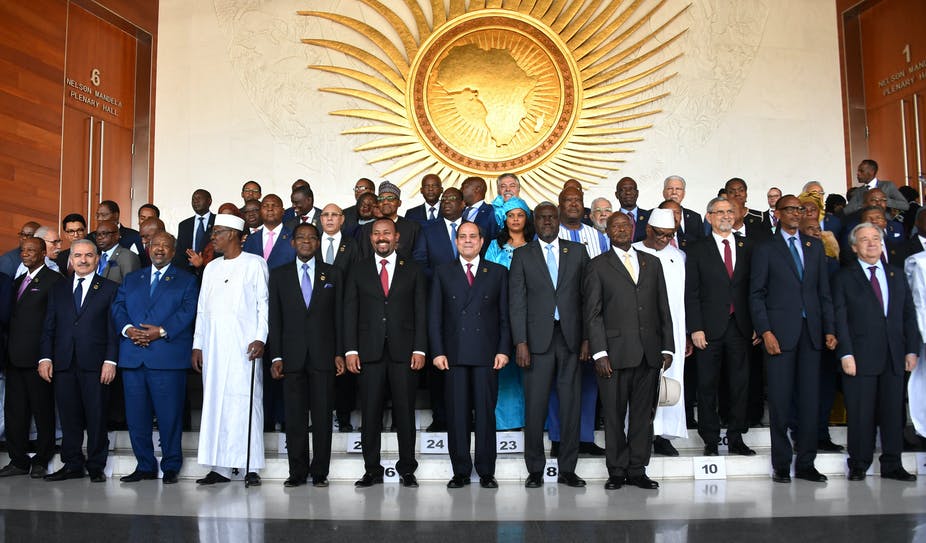The African Peace and Security Architecture (APSA) was established within the context of the transformation of the Organisation of African Unity (OAU) to the African Union (AU). In 2002, the African Union was established as the successor of the OAU, symbolising a normative shift from non-intervention to non-indifference accompanied with the establishment of an elaborate institutional architecture. This shift was the result of developments both in Africa as well as broader global developments at the end of the Cold War. This article seeks to analyse the effectiveness of the five pillars of the APSA in preventing and solving conflict in the region.
The African peace and security council
It is the standing decision-making organ of the AU for the prevention, management and resolution of conflicts. It is a collective security and early warning arrangement intended to facilitate timely and efficient responses to conflict and crisis situations in Africa. It is also the key pillar of the African Peace and Security Architecture (APSA), which is the framework for promoting peace, security and stability in Africa. The APSC needs to strengthen coordination in its conflict prevention and peacebuilding analysis and action to ensure coherence and integration across a number of complex sets of actors, and also to avoid clashing in the mandates of the different actors and institutions.
The Panel of the Wise
The Panel’s mandate includes advising the PSC and Chairperson, undertaking all such actions deemed appropriate to support the efforts of the PSC and Chairperson for preventing conflict, making pronouncements on any issue relating to the promotion and maintenance of peace, security and stability in Africa, and acting at the request of the Council or Chairperson, or on its own initiative. Its role extends to preventive diplomacy and meditation. The choice of the five elders on this panel plays a critical role in confidence building and for the panel to execute its mandate effectively, it needs to strengthen collaboration with experts, academia and civil society from across the region.
Continental Early Warning System
Its main objective is to anticipate and prevent conflicts on the African continent, and to provide timely information about violent conflicts based on specifically developed indicators. The failure to translate analysis into more conflict-sensitive, politically smart programming due to resource constraints leads to some conflict indicators remaining unnoticed. Therefore, there is need for a unified information exchange system within the AU structures to improve knowledge sharing and lesson learning. This will also address the warning-response gap because experts agree that prevention is always better than managing the consequences of conflict. There is also need for more cooperation from member states in providing country-level conflict analyses and risk management frameworks, this is helpful when tracking conflict trends.
The Peace Fund
Its mandate is to provide the necessary financial resources for peace support missions and other peace and security-related activities. This it has not successfully done as there exists a funding gap in the peacekeeping missions of the AU partly due to the failure of member states to meet their annual obligations. As a result, the biggest percentage of the AU budget is facilitated by external actors. For this to change, there is need for innovative thinking to break the donor dependency cycle which is not sustainable. But also, African leaders should realise that in order to own the solutions to the continent’s peace and security challenges, they need to increase funding to the regional body.
The African Standby Force
It was established to enable the PSC to perform its responsibilities with respect to the deployment of peace support missions and interventions. The ASF is partly composed of pledged capabilities in five Regional Economic Communities/Regional Mechanisms (RECs/RMs). They include; the Economic Community of Central African States (ECCAS) Standby Force, Eastern African Standby Force (EASF), North African Regional Capability (NARC) Standby Force, Southern African Development Community (SADC) Standby force, Economic Community of West African States (ECOWAS) Standby force. However, a lack of appropriate and timely training poses a significant constraint which, compounded by huge financial challenges, prevents forces from being on standby or achieving the objectives outlined in ambitious mandates.
So, while the AU has been taking steps to do things differently from its predecessor, the Organisation of African Union (OAU), its attempts to address the continent’s peace and security challenges continue to be undermined by a number of factors. The African Peace and Security Architecture which is the framework for promoting peace, security and stability needs more support from AU member states and regional bodies to strengthen the five pillars analysed in this article. Without the needed support, its norms, principles and policies will remain on paper and Africa will continue to be home to majority of the world’s armed intra-state conflicts. Therefore, political will of African states and their regional organisations remain key to committing resources and ensuring functional AU institutions.
By Patricia Namakula
Head of Research and Public Relations


